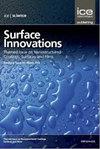Carbon nitride photoelectrode prepared via a combined strategy of electrophoresis and vapor deposition
IF 3.5
4区 材料科学
Q3 CHEMISTRY, PHYSICAL
引用次数: 0
Abstract
Photoelectrochemical water splitting converts solar energy into clean hydrogen fuel. In this system, the preparation of high-quality photoanode is essential for achieving efficient solar hydrolysis. Polymeric carbon nitride has emerged as a promising photocatalyst for solar water splitting due to its visible light absorption, suitable band edge positions and good chemical stability. However, considerable difficulties have been encountered for the preparation of robust and well-bonded carbon nitride films on conductive substrates. Herein, a combined strategy of electrophoresis and vapor deposition results in robust and high performing carbon nitride film photoelectrodes with good bonding on substrates, suitable thickness for light absorption, and enhanced charge separation and transfer abilities. The unique structure of the photoanode thus facilitates the oxidation of water and leads to an optimal photocurrent density of approximately 120 μA cm-2 at 1.23 VRHE. This work provides new insights for the preparation of polymeric carbon nitride film photoelectrodes, promoting the developments of photoelectric and photoelectrochemical applications based on carbon nitride.采用电泳和气相沉积相结合的方法制备氮化碳光电极
光电化学水分解将太阳能转化为清洁的氢燃料。在该系统中,制备高质量的光阳极对于实现高效的太阳能水解至关重要。聚合物氮化碳由于其对可见光的吸收、合适的带边缘位置和良好的化学稳定性,已成为一种很有前途的太阳能水分解光催化剂。然而,在导电衬底上制备坚固且结合良好的氮化碳膜遇到了相当大的困难。在此,电泳和气相沉积的组合策略产生了坚固且高性能的氮化碳膜光电极,该光电极在衬底上具有良好的结合、合适的光吸收厚度以及增强的电荷分离和转移能力。光阳极的独特结构因此促进了水的氧化,并导致约120的最佳光电流密度 μA cm-2,1.23 VRHE。这项工作为聚合物氮化碳膜光电极的制备提供了新的见解,促进了基于氮化碳的光电和光电化学应用的发展。
本文章由计算机程序翻译,如有差异,请以英文原文为准。
求助全文
约1分钟内获得全文
求助全文
来源期刊

Surface Innovations
CHEMISTRY, PHYSICALMATERIALS SCIENCE, COAT-MATERIALS SCIENCE, COATINGS & FILMS
CiteScore
5.80
自引率
22.90%
发文量
66
期刊介绍:
The material innovations on surfaces, combined with understanding and manipulation of physics and chemistry of functional surfaces and coatings, have exploded in the past decade at an incredibly rapid pace.
Superhydrophobicity, superhydrophlicity, self-cleaning, self-healing, anti-fouling, anti-bacterial, etc., have become important fundamental topics of surface science research community driven by curiosity of physics, chemistry, and biology of interaction phenomenon at surfaces and their enormous potential in practical applications. Materials having controlled-functionality surfaces and coatings are important to the manufacturing of new products for environmental control, liquid manipulation, nanotechnological advances, biomedical engineering, pharmacy, biotechnology, and many others, and are part of the most promising technological innovations of the twenty-first century.
 求助内容:
求助内容: 应助结果提醒方式:
应助结果提醒方式:


